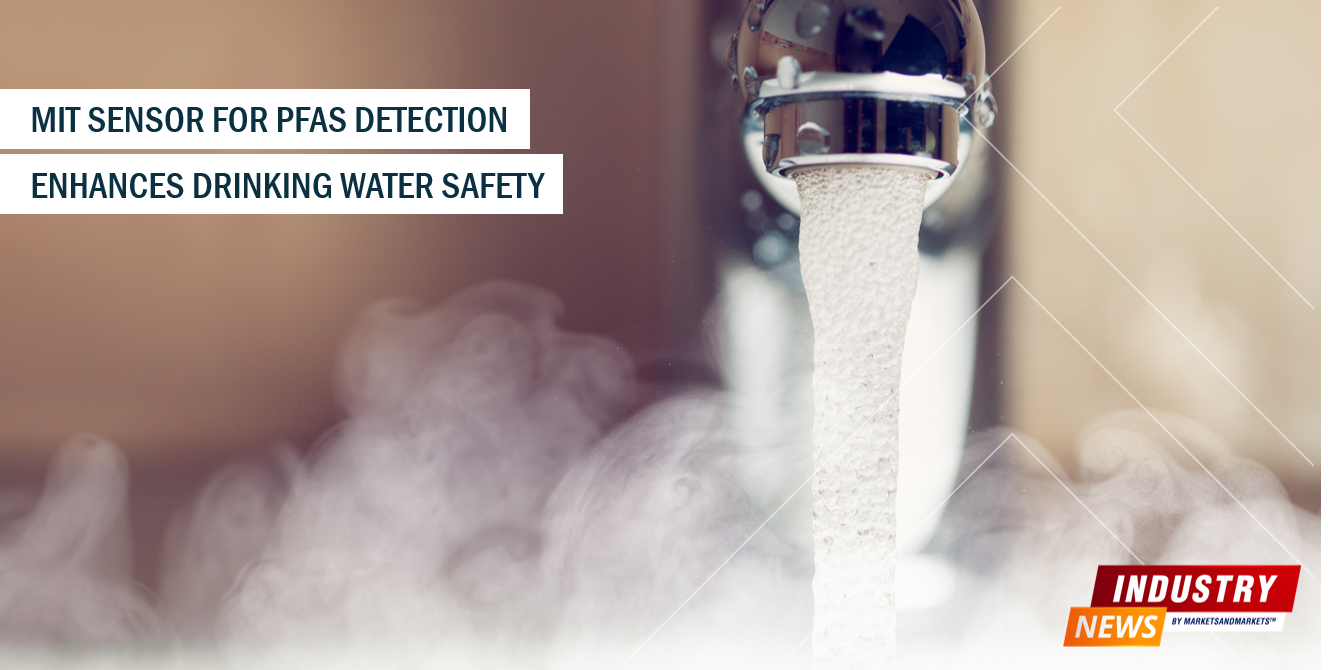MIT Develops Cost-Effective Sensor for PFAS Detection in Water

A new sensor developed by MIT chemists has the ability to detect per- and polyfluoroalkyl substances (PFAS) in drinking water, also known as "forever chemicals." This groundbreaking technology offers a more cost-effective and efficient solution compared to traditional PFAS detection methods.
It is in line with the expected substantial growth of the PFAS testing market, driven by strict environmental regulations and increasing demand for safe drinking water.
According to MarketsandMarkets, the market for PFAS testing is expected to experience significant expansion due to heightened awareness of the adverse effects of PFAS on human health and the environment. This urgent need for advanced detection technologies is further emphasized by regulatory efforts, especially in Europe where the European Commission plans to phase out PFAS in packaging by 2030. Leading companies such as Agilent Technologies, Eurofins Scientific, ALS Limited, PerkinElmer, and SGS are at the forefront of developing solutions to meet the rising demand for PFAS testing in various industries, including packaging, automotive, and electronics. The growth of this market is driven by factors such as the push for PFAS-free processing aids in response to health and environmental concerns, and the challenges facing the use of PFAS in packaging due to regulatory restrictions.
The shift towards PFAS-free alternatives in these sectors highlights the crucial role of innovative testing methods like the MIT sensor in ensuring product safety and regulatory compliance. The MIT team, led by senior author Timothy Swager, is confident about scaling up the technology to process larger volumes of water through a polyaniline membrane, potentially achieving the required sensitivity to align with EPA advisories. In the context of environmental monitoring, the sensor developed by MIT chemists is a significant advancement, offering a rapid and cost-efficient method for detecting PFAS compounds in water. This innovative technology not only surpasses existing methods in terms of efficiency and affordability, but also aligns with the global efforts towards stricter environmental safety standards and the reduction of harmful substances in consumer products.
By enabling quicker and more accessible testing for these "forever chemicals," the sensor is poised to play a critical role in water safety initiatives, industrial compliance, and the broader effort to mitigate the environmental and health impacts of PFAS contamination. This breakthrough has the potential to revolutionize the approach towards monitoring and regulating water quality, providing a powerful tool in the fight against pollution and contributing to the well-being of communities worldwide. For more in-depth information, please refer to the original article on MIT News.
MarketsandMarkets Industry News Desk
GET AHEAD
Top Research Reports to Fuel Your Industry KnowledgeEditor's Pick


Information and Communication Technology
Insurtech Funding News - Coverdash raises USD 13.5 Million
PODCASTS

Sustainable Digital Transformation & Industry 4.0
Sanjay Kaul, President-Asia Pacific & Japan, Cisco, and host Aashish Mehra, Chief Research Officer, MarketsandMarkets, in conversation on unraveling 'Sustainable Digital Transformation and Industry 4.0'
11 July 2023|S2E12|Listen Now

Generative AI
Prasad Joshi, Senior Vice President-Emerging Technology Solutions, Infosys, and host, Vinod Chikkareddy, CCO, MarketsandMarkets, in exploring the recent advances in AI and the generative AI space.
7 Nov 2023|S2E13|Listen Now
PFAS Testing Market
Download Whitepaper
The shift towards PFAS-free alternatives in these sectors highlights the crucial role of innovative testing methods
The sensor developed by MIT chemists is a significant advancement, offering a rapid and cost-efficient method for detecting PFAS compounds in water.












